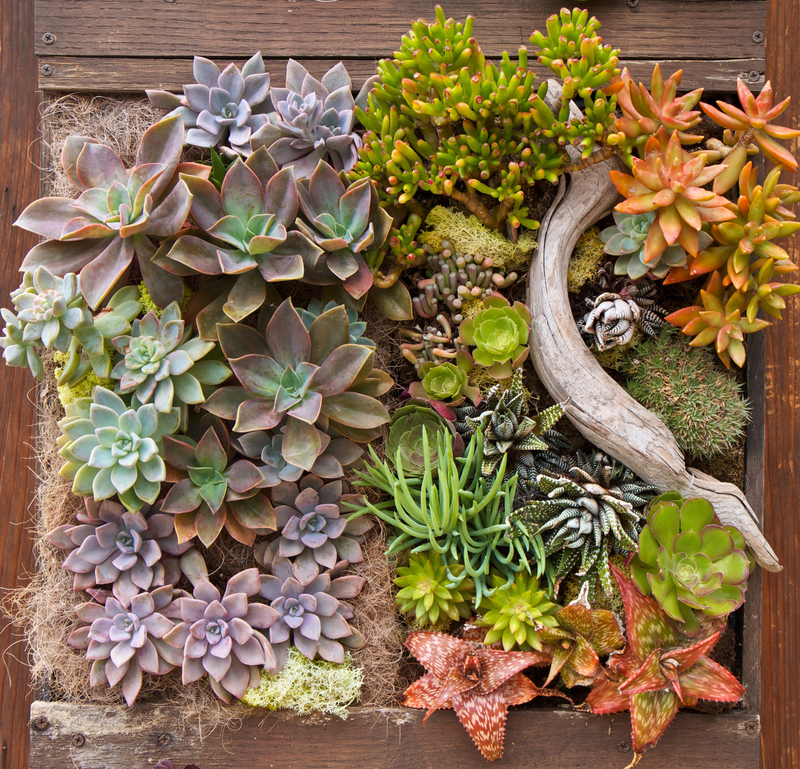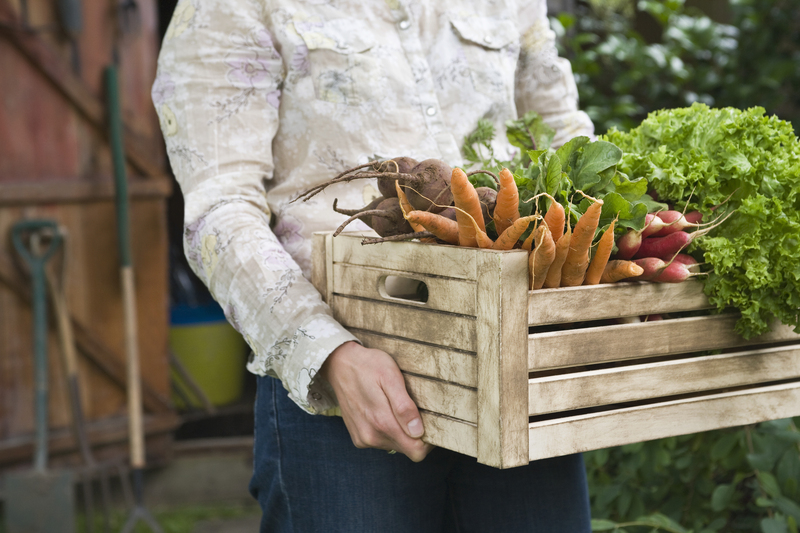Green thumbs against global warming: The role of gardens
Posted on 22/06/2025
Green Thumbs Against Global Warming: The Role of Gardens
Introduction to Green Gardening and Climate Change
As concerns over global warming and climate change reach an all-time high, individuals and communities are increasingly seeking ways to make a meaningful difference. Among the most accessible and impactful approaches is the cultivation of gardens. The concept of green thumbs--referring to those skilled at nurturing plants--has never been more crucial. But how exactly do gardens contribute to the fight against global warming? This comprehensive article delves into the role gardens can play as natural climate solutions and offers practical steps for everyone to get involved.

How Gardens Help Combat Global Warming
The Carbon Footprint Connection
Plants are nature's original carbon-capturing technology. Through photosynthesis, they absorb carbon dioxide (CO2) from the air, acting as natural carbon sinks. This vital process helps mitigate the ongoing accumulation of greenhouse gases in our atmosphere, one of the prime drivers of global warming.
- Lawns, flower beds, and vegetable plots--even on a small scale--contribute to carbon sequestration.
- Trees and shrubs store significant amounts of carbon in their wood and root systems, making them garden heroes in the climate crisis.
Urban Gardens: Oases for the Environment
In our expanding cities, urban gardens transform concrete jungles into patches of greenery. These gardens perform multiple climate-positive functions, such as reducing the heat island effect, enhancing local biodiversity, and capturing stormwater that would otherwise overwhelm city infrastructure.
- Proven to lower temperatures in their immediate vicinity, making cities more habitable in the face of rising heatwaves.
- Act as barriers to air and water pollution by stabilizing soil and filtering particulates.
The Power of Native Plants and Pollinator Gardens
Choosing native species for gardens supports local ecology and reduces dependency on chemical inputs and excessive watering. Pollinator gardens, filled with species that attract bees, butterflies, and other beneficial insects, strengthen the resilience and productivity of surrounding ecosystems.
- Low-maintenance and more resistant to pests and diseases.
- Provide essential food and habitat for declining pollinator populations, which play a crucial role in both natural and agricultural systems.
Gardens as Living Laboratories for Climate Resilience
In the face of climate uncertainty, gardens serve as living laboratories for testing plant resilience and adaptive strategies. By observing how different species respond to changing conditions, gardeners contribute valuable data and strategies for climate adaptation.
Rain Gardens and Water Management
One practical approach is the creation of rain gardens, which are designed to capture, filter, and slowly release stormwater. This not only prevents flooding and erosion but also recharges groundwater and supports lush, microbe-rich soils that store carbon more effectively.
- Helps adapt to heavier rainfalls and droughts--both now more frequent due to global warming.
- Reduces pressure on urban water infrastructure and minimizes pollution from surface runoff.
Composting: From Waste to Climate Solution
Composting is another vital aspect of gardening's climate-fighting effort. By turning food scraps and yard waste into nutrient-rich compost, gardeners reduce the amount of organic matter sent to landfills, where it would otherwise release methane--a potent greenhouse gas.
- Compost improves soil fertility and soil health, allowing gardens to absorb more carbon.
- Reduces the need for chemical fertilizers, which have a high carbon footprint and can harm local ecosystems.
Sustainable Gardening Practices for Climate Action
1. Going Peat-Free
Many commercial garden soils contain peat, the mining of which destroys vital carbon-rich peatlands. Choosing peat-free composts and soils preserves these important natural carbon stores and promotes a truly climate-friendly garden.
2. Water-Wise Gardening
Adopting water-wise practices such as mulching, drip irrigation, and the use of drought-tolerant plants reduces water waste and energy use, both significant contributors to global emissions.
3. Organic and Regenerative Gardening
Opting for organic gardening methods--such as crop rotation, cover cropping, and natural pest control--protects soil health and biodiversity while minimizing the need for fossil-fuel-derived chemicals.
- Regenerative gardening goes a step further by focusing on building soil organic matter, thus drawing more carbon out of the atmosphere.
4. Planting for Biodiversity
Diversity is a garden's secret weapon in the fight against global warming. A wide range of species, especially perennials and deep-rooted plants, stabilizes the ecosystem and increases carbon capture.
- Mixing edibles, ornamentals, and trees creates a resilient and productive microclimate.
Benefits Beyond Carbon Capture
The benefits of gardens in the climate struggle are not limited to carbon storage. The implications stretch across physical health, community wellbeing, education, and even urban policy.
Physical and Mental Health
Spending time in green spaces--whether actively gardening or simply relaxing among plants--lowers stress, boosts mood, and supports overall health. Greening urban environments mitigates the health impacts of pollution and heatwaves, making cities more liveable in a warming world.
Education and Community Engagement
Community gardens, school plots, and allotments become hubs for environmental education and civic engagement. They inspire people of all ages to learn about ecology, sustainability, and climate solutions--empowering new generations of green thumbs.
Green Thumbs in Action: How to Start Your Climate-Positive Garden
1. Assess Your Growing Space
Whether it's a windowsill or a backyard, anyone can start a garden. Begin by evaluating sunlight, water access, and soil conditions. Container gardening is a great solution for those with limited space.
- Even balconies or rooftops can support pollinator-friendly herbs and vegetables.
2. Plan for Biodiversity
A diverse garden is a resilient garden. Incorporate a mix of trees, shrubs, flowers, and edibles, focusing on native plants suited to your region.
- Research local plants that support native wildlife and require less maintenance.
3. Prepare and Enrich Your Soil
Healthy soils are garden carbon sinks. Enhance biodiversity and carbon capture by adding compost and organic matter, avoiding harsh chemicals, and minimizing soil disturbance.
4. Practice Water Efficiency
Install rain barrels, use mulch, and water early or late in the day to minimize evaporation. These practices save energy and resources while supporting climate-positive growth.
5. Encourage Pollinators and Wildlife
Plant bee-friendly flowers, allow some areas to grow wild, and avoid pesticides. These steps attract beneficial insects and birds, creating a thriving ecosystem right outside your door.
6. Share, Connect, and Inspire
Gardening is even more effective as a collective effort. Join local gardening clubs, participate in community garden projects, or simply share your knowledge and excess produce with neighbors. By joining forces, green-thumbed individuals can foster a culture of climate action and environmental responsibility.
The Role of Gardens in Urban Climate Policy
Recognizing the climate-solving power of gardens, some cities now incorporate urban greening into their official sustainability plans. Programs to plant street trees, install green roofs, and promote community gardens are essential tools for climate adaptation and resilience.
- Policy-makers are increasingly aware that investing in gardens brings not just environmental benefits, but social and economic returns as well.
- Green infrastructure is cost-effective and improves city dwellers' quality of life, especially in marginalized communities most threatened by global warming.

Conclusion: Every Garden Makes a Difference
With climate change accelerating, it's never been more important to embrace the power of the garden. From carbon sequestration to supporting biodiversity, from cooling hot cities to educating the next generation, the role of gardens in tackling global warming is profound and multifaceted.
You don't need to be an expert to be a part of the solution. Every seed you plant, every compost bin you fill, and every pollinator you welcome brings us a step closer to a healthier, more sustainable planet. So dust off your gardening gloves and let your green thumb shine--a better climate starts right in your own backyard.
Frequently Asked Questions About Gardens and Global Warming
- Can small gardens really help reduce global warming?
Absolutely! Cumulatively, millions of home gardens add up to significant carbon absorption, especially when coordinated community-wide. - What are the best plants for carbon capture?
Trees and perennial shrubs are particularly effective, but even herbaceous perennials and healthy soils contribute meaningfully. - How can gardening save energy?
Green roofs and shade trees can lower heating and cooling needs, while growing food at home reduces transport emissions. - What if I don't have outdoor space?
Indoor and balcony gardens still support pollinators, reduce the urban heat effect, and improve local air quality.
Green thumbs against global warming are not just a metaphor--they are an active, growing movement. Start your climate-smart garden today and be part of the real solution for our warming world.

